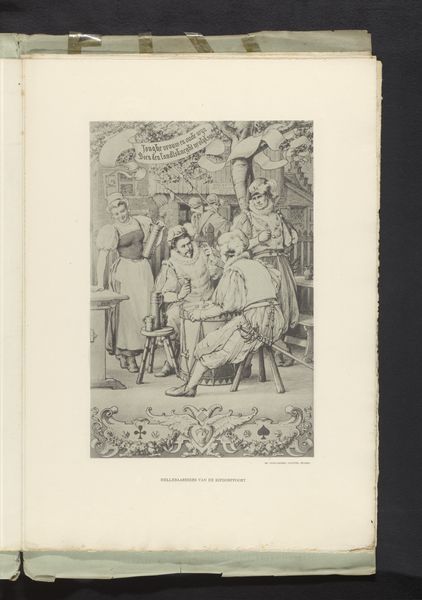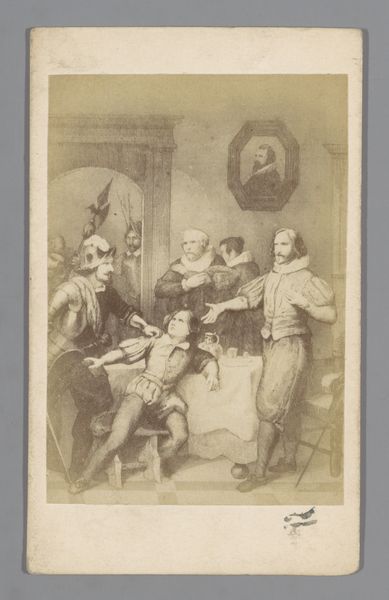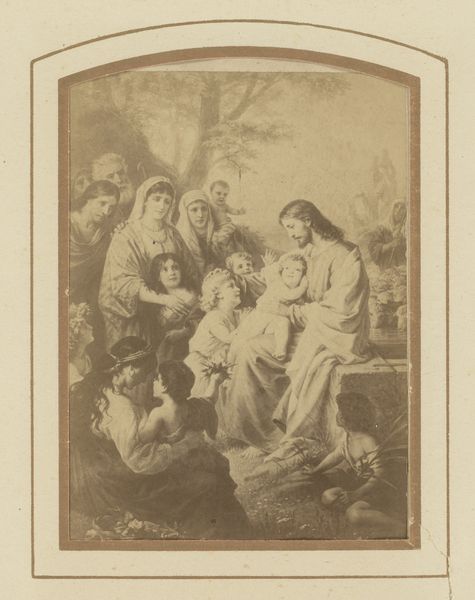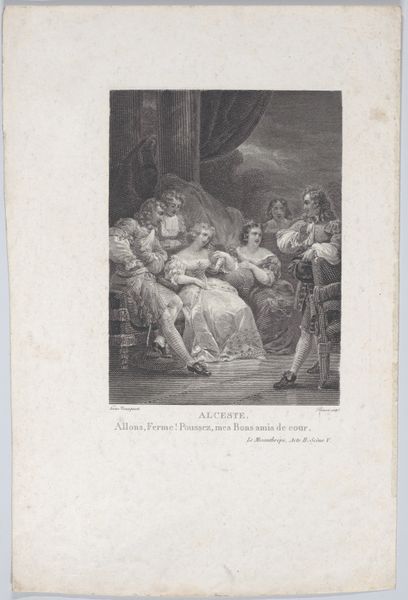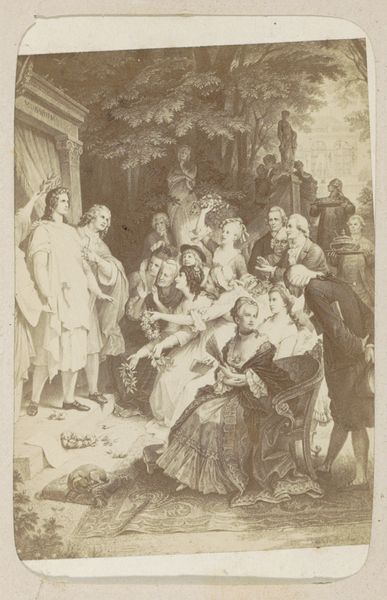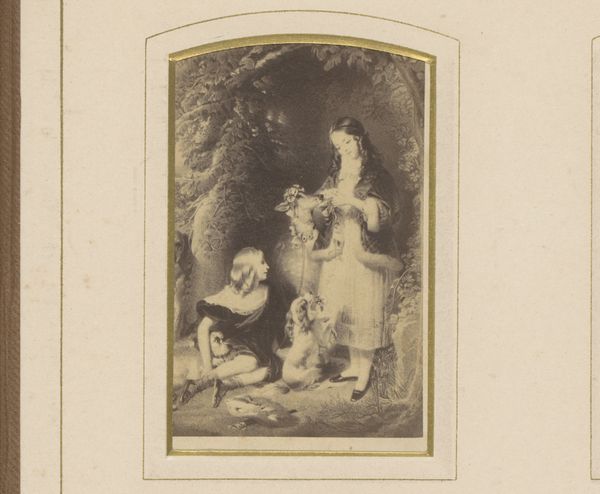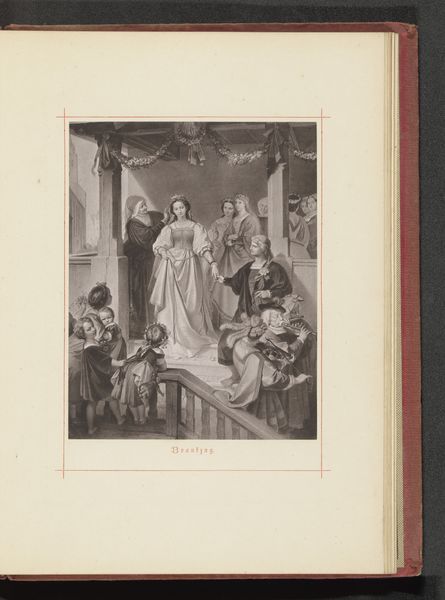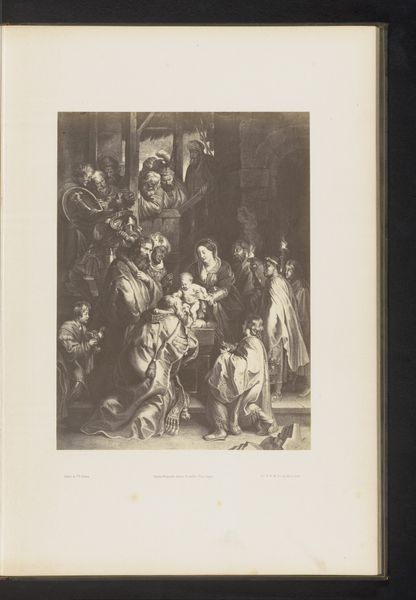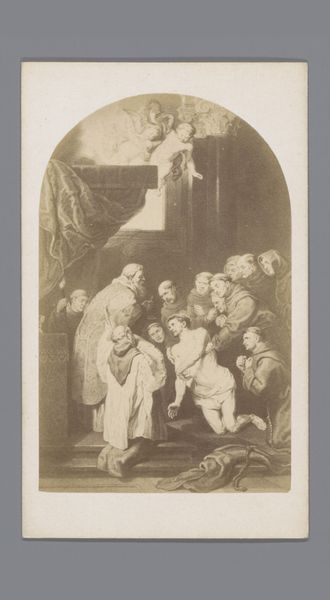
Fotoreproductie van een voorstelling van Goethe in Weimar c. 1880 - 1885
0:00
0:00
anonymous
Rijksmuseum
Dimensions: height 125 mm, width 95 mm
Copyright: Rijks Museum: Open Domain
Editor: This is a photograph, a gelatin-silver print titled "Fotoreproductie van een voorstelling van Goethe in Weimar," placing it around 1880-1885. The staging feels very deliberate, almost theatrical. What strikes you about the construction of this image? Curator: I’m interested in what this *reproduction* tells us. This wasn’t simply capturing a moment. It points to a complex interplay of art forms: painting, likely a popular historical painting, meticulously reproduced through photography. The gelatin-silver print becomes a readily distributable object, democratizing access to art, but also participating in the growing commodification of culture. Who owned these prints, and what did they *do* with them? How were they consumed and displayed? Editor: So, not just the image itself, but the journey of its *reproduction* is significant? The 'means of production' beyond the initial artistic inspiration. Curator: Precisely. Look closely at the subjects depicted: aren’t those figures enacting a scene from antiquity, perhaps a Greek play? The artifice, the conscious performance captured on the print underscores how far we are removed from an ‘authentic’ moment, instead focusing on the reproduction, and repeated citation of it. Where were these materials sourced from, where did it take place, what were the factory conditions, how was it distributed and purchased, what kind of labor made all this possible? This image raises a bunch of material questions that are fundamental to its cultural and historical value, far beyond simply representing Goethe and his circle. Editor: I hadn't thought of that layered distance before, or the wider context of production and labour... Fascinating! Thank you. Curator: My pleasure. Remember, understanding art isn't just about the art *itself,* but the hands and forces that shaped its creation, distribution, and reception.
Comments
No comments
Be the first to comment and join the conversation on the ultimate creative platform.

